
The Palace of Guell (Palau Güell) is a former residential building in Barcelona, which was one of the first works of the Spanish architect Antonio Gaudi.
Today, the palace is a magnificent example of Russian architecture in the context of modernism, as well as part of the UNESCO World Heritage Site "Works of Antonio Gaudi".
The palace works as a museum. Its interior and roof can be visited.
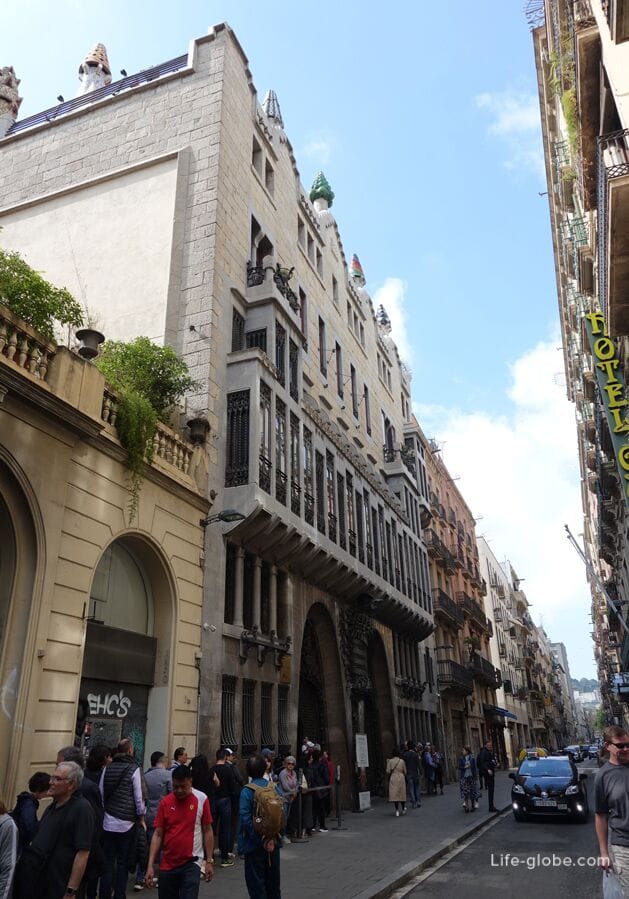
The palace was built by Antoni Gaudi in 1886-1890 as a mansion for the Catalan industrialist Eusebi Guell.
The appearance of the palace reflected the combination of decorative and structural elements that Gaudi later used in his works.
Externally, the palace partially resembles a Venetian palazzo.
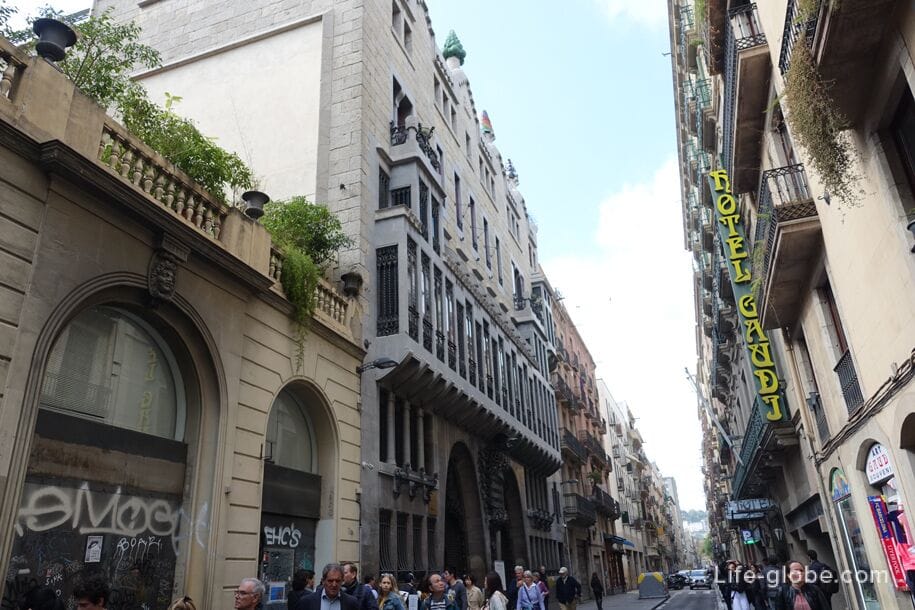
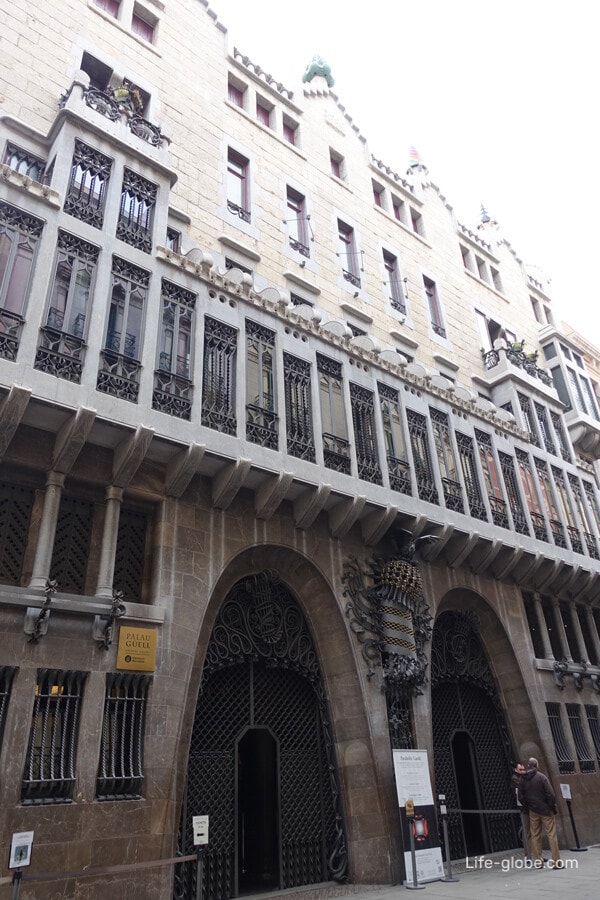
The main facade of the Guell Palace is accentuated by double gates, which are a parabolic arch with wrought iron patterns.

Built entirely of Garraf limestone, the main facade is architecturally divided into three levels. The facing of the first and second levels is made of smooth stone, and in the finishing of the third level, the stone was treated with a punch.
On the second level, a projecting facade stands out, which overhangs the first floor.
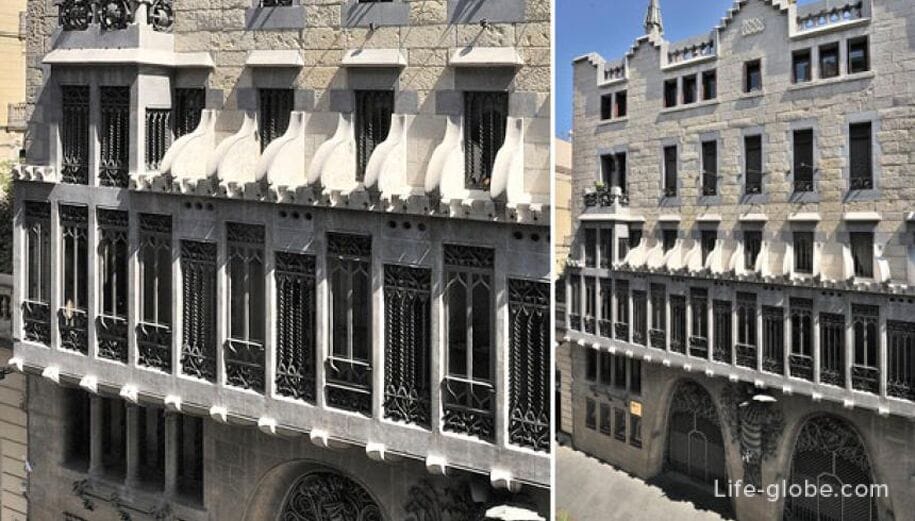
The rear facade of the Guell Palace faces the courtyard and stands out with a projecting balcony with wooden shutters.
The rear facade, made of treated Garraf limestone, is divided into two levels by a projecting stone impost.
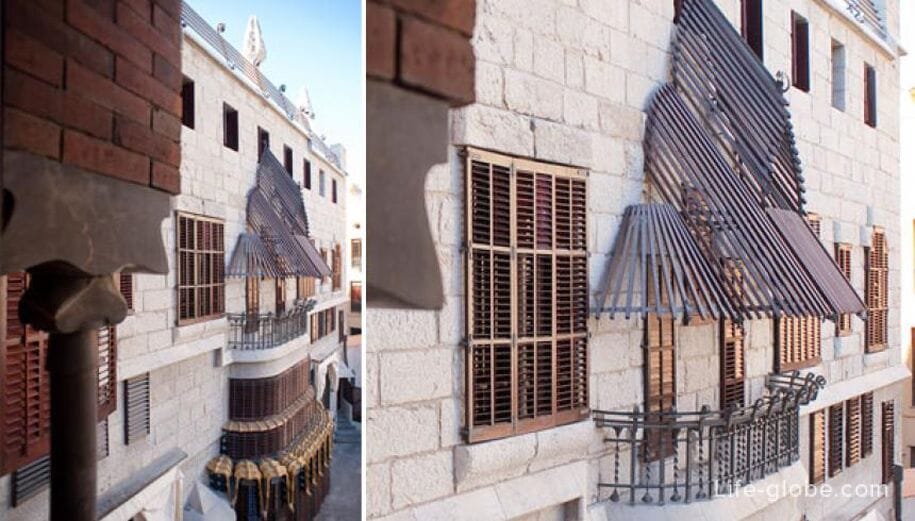
The interior spaces of the house are concentrated around the main hall, which once served for receiving guests from high society and holding concerts.
Today in the palace you can visit the rooms located on several floors, as well as the basement and roof.
There is a permanent furniture exhibition in the walls of the building, temporary exhibitions are also held.
Basement
The basement of the Guell Palace used to be used as a stable. It could be accessed from the ground floor through two entrances: a gentle ramp, which was used for lifting and lowering horses, and a spiral ramp - very steep and paved with pebbles, which was used by people.
Previously, the coachman who drove horse-drawn carriages and the groom each had a room in this space. In the same basement there is a courtyard. Firewood, coal and straw were also stored there, and there was also a well and a cistern where rainwater was collected.
The basement of the building is distinguished by brick columns with mushroom-shaped capitals and a vaulted ceiling.
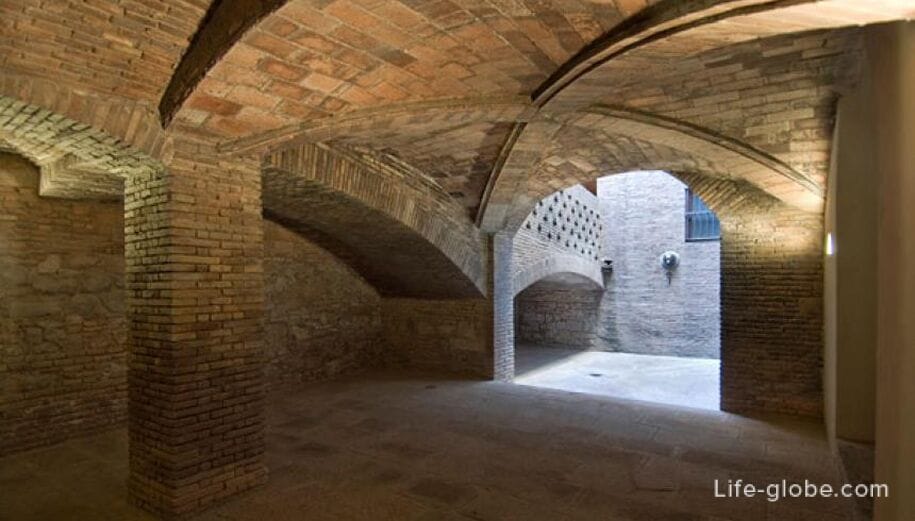

Ground floor
On the ground floor there are: a double lobby; a garage where carriages were housed (and horses descended down a ramp to the basement); a warehouse of agricultural products, which is currently occupied by the Palau Güell store; the doorman's house; a special room from which the porter could watch the street; and a staircase intended exclusively for service personnel.
Between the two lobbies is the main staircase leading to the upper floor.
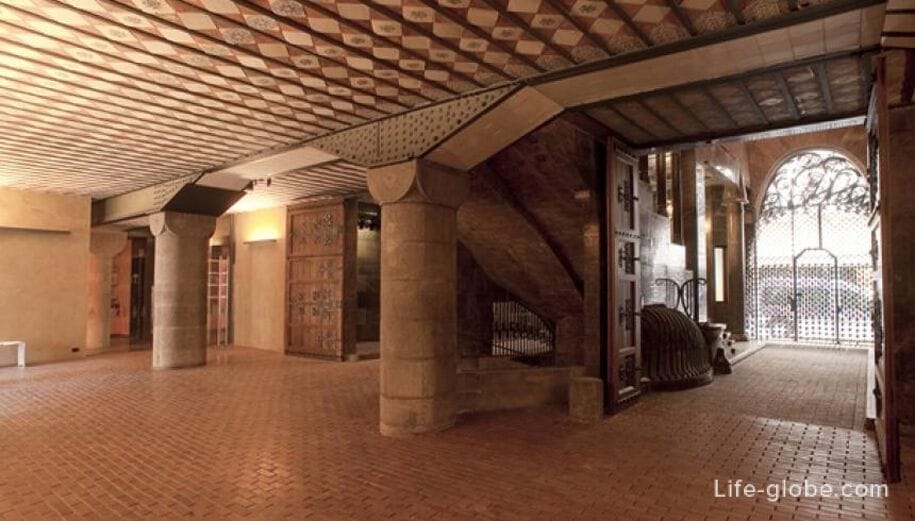
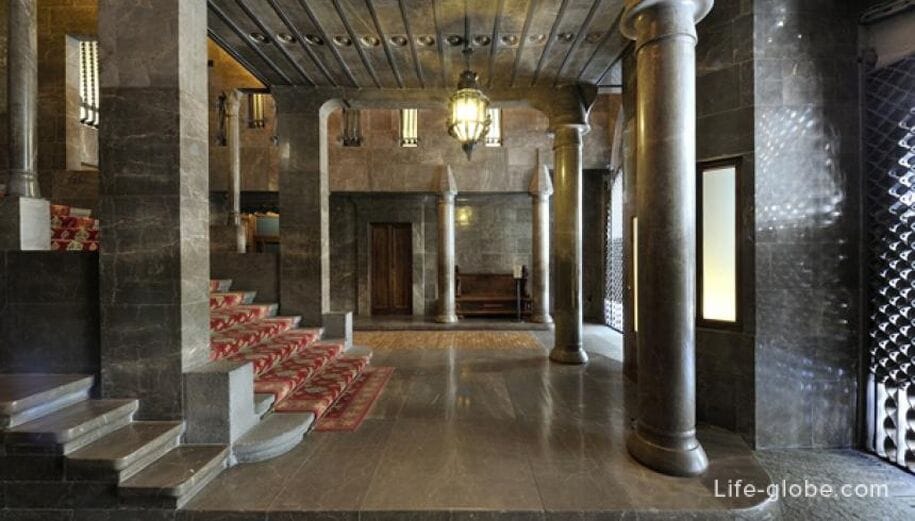

Mezzanine floor
The mezzanine of the palace was used as office space. Here was the office of Eusebi Guel and other archival and administrative premises, as well as the private library of the palace.
In this space of the palace there is also the main lobby, through which you can get to the apartment building itself.
The lobby stands out with marble walls, floor and ceiling. From the lobby you can climb to the main floor of the palace, by a luxurious stone staircase.
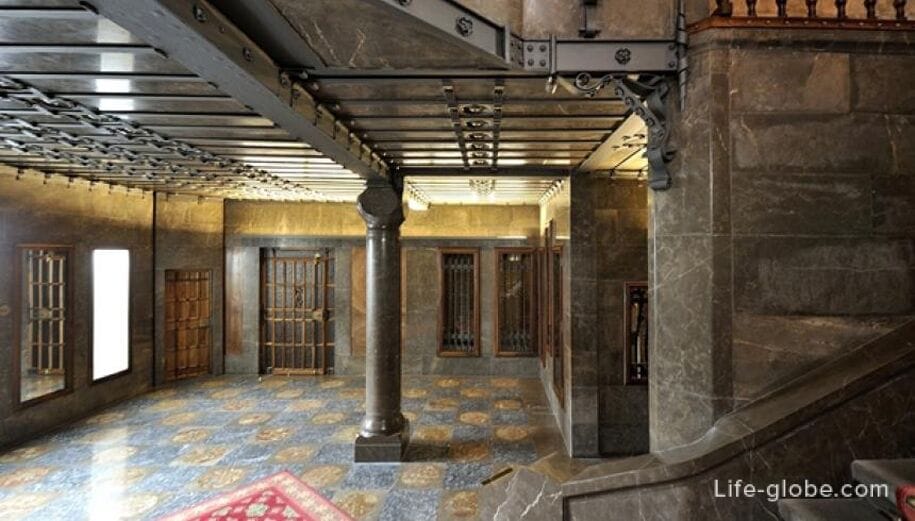
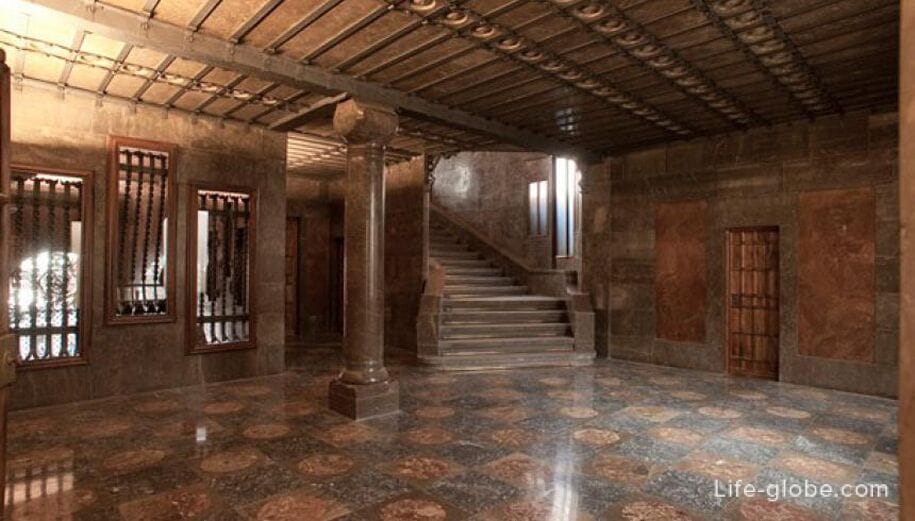
In the office of Eusebi Guel there is a fireplace made of gray marble with red floral inscriptions, attributed to the architect Kamil Olivers.

Main floor
Rising to the ground floor, the building acquires the dimensions of a palace, where the floor rooms are distributed on both sides of the central hall, equal to the height of the building.
On the floor there are:
- an entrance hall in which the stained glass windows deserve special attention;
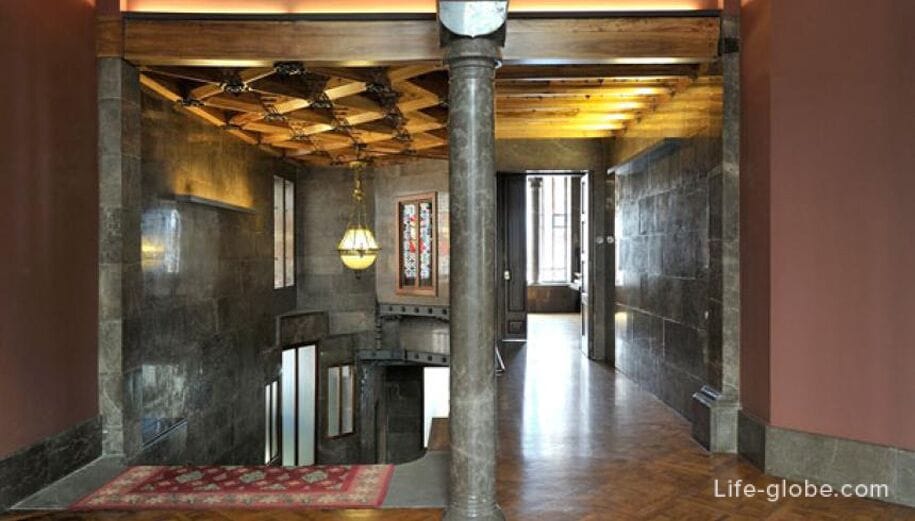
- a passage room that leads to the central hall of the Guell Palace.
The room is distinguished by a gallery of arches on columns, which leads to a grandstand overlooking the street;
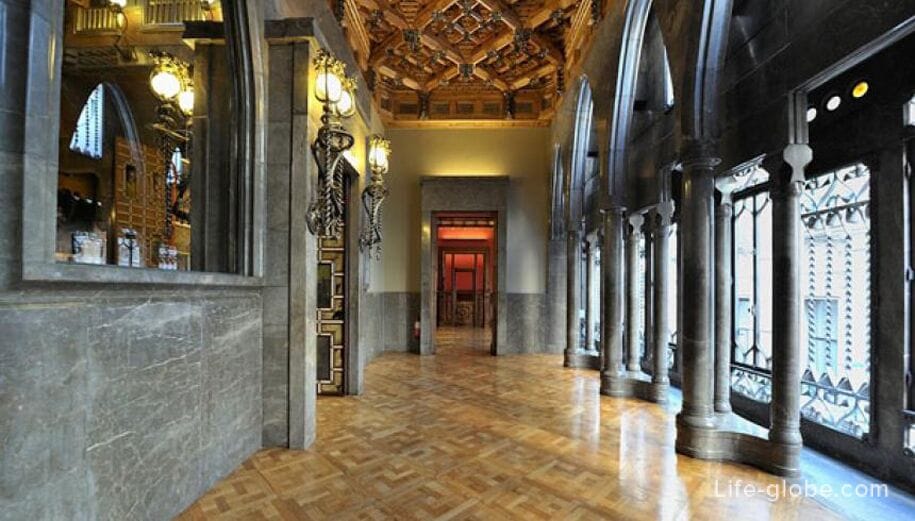
- guest room where visitors waited before entering the central hall.
The room is particularly distinguished by the ceiling, made of high-quality noble wood with ornaments of wrought iron and gold leaf. Also noteworthy are the stained glass windows decorated with characters from Shakespeare's play.
Next to the room there is a dressing table, which was used by ladies attending evenings and concerts held by the Guell family;
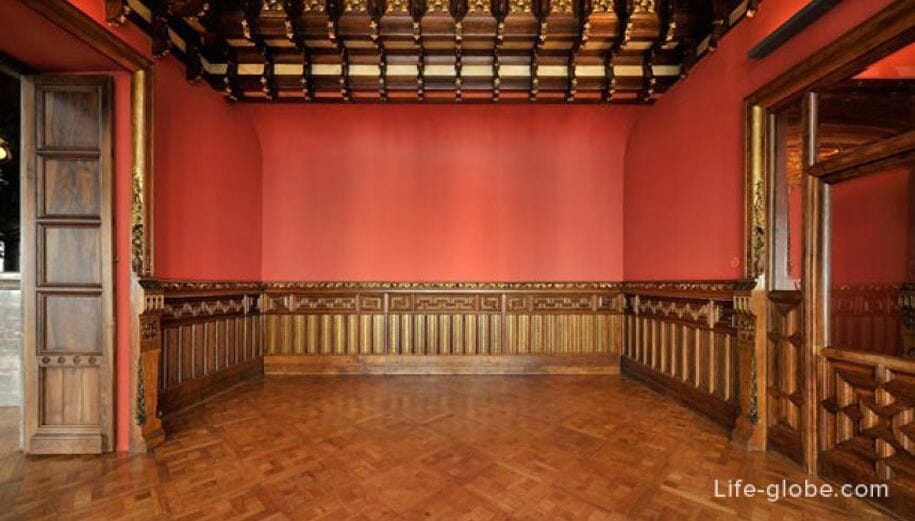
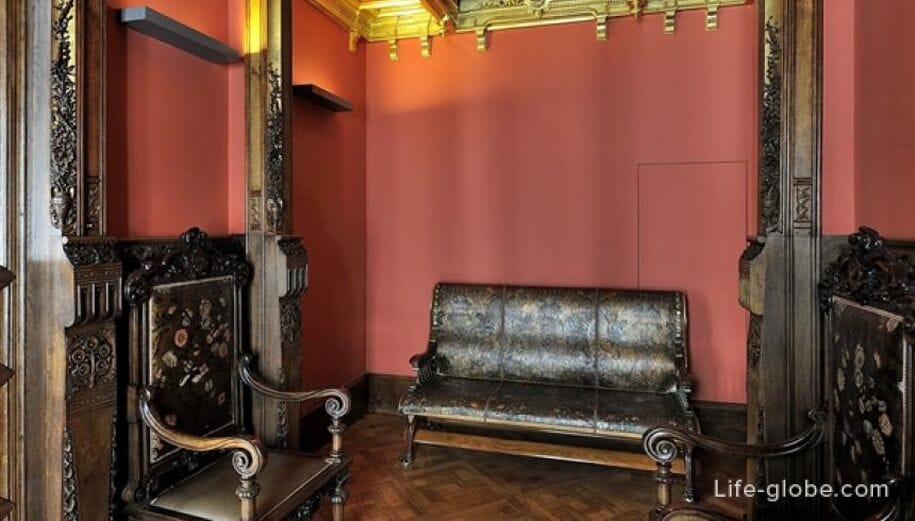
- central living room (main hall of the palace), which was the main room of the house.
The living room has a parabolic dome-ceiling that illuminates the entire space of the hall through small openings and a large central oculus.
Events and concerts were held in the premises.
Religious services were also held in the hall. The chapel, located in the central hall, is a small enclosure closed by two large doors that, when opened, leave the altar visible.;
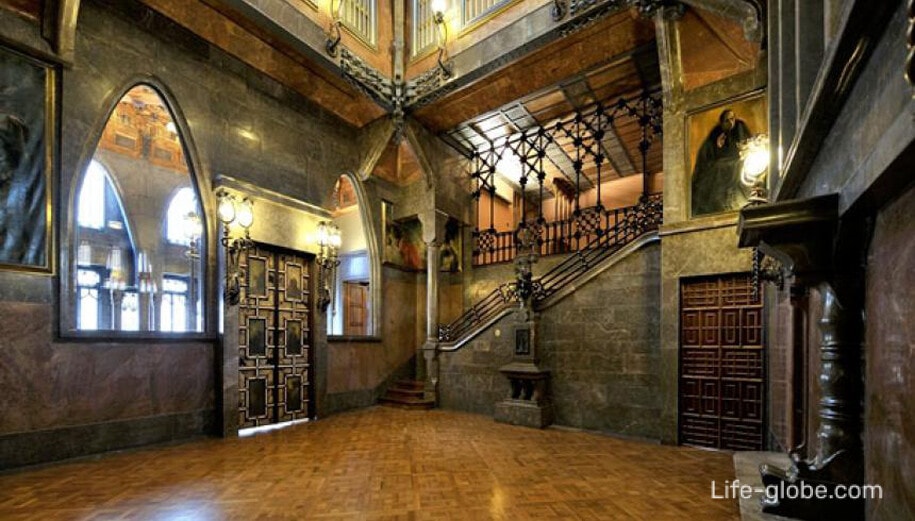
- the confidence room or smoking room, which served as a meeting place and conversations with the closest friends. It was also the place where the daughters of the Guell family rehearsed and gave piano concerts.
In this room, the stained glass windows with acid engraving stand out, which belong to a fragment of a painting by Manuel Ferran, an author who made several portraits for the Guell family.
There is another room near the trust room, which has a wall with ten windows facing the inner courtyard of the island. This room, also called the smoking room, was a quiet corner where you could relax and read. There is an original bench designed by Gaudi;
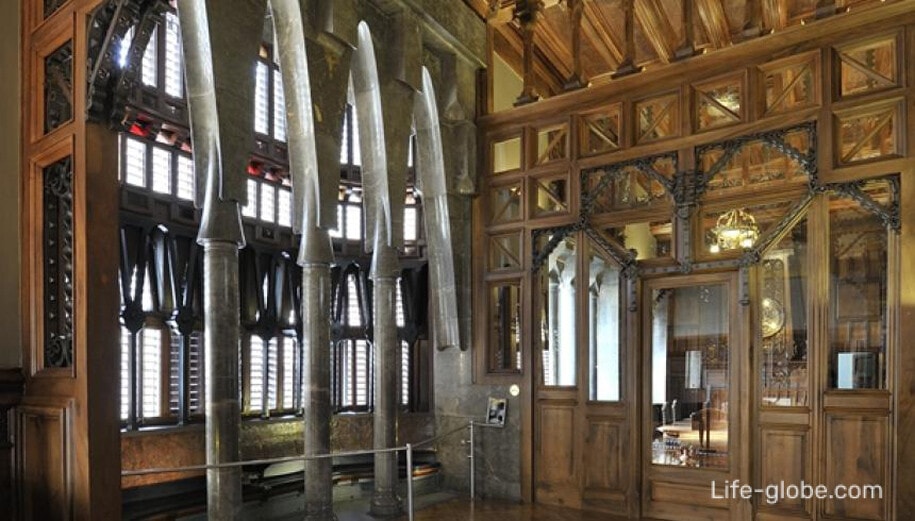
- the dining room, which contains a table with twelve chairs belonging to the Guell family, as well as a walnut fireplace designed by Camil Oliveras, and wooden cabinets on the wall.
The dining room is decorated with images of animals in oriental style.
The dining room is separated from the smoking room by wooden doors in Arabic style and wrought iron gates;

- billiard room and workshop, which was used for playing billiards, as well as as a sculpture and painting workshop for Guell children, especially Maria Lluisa Guell and Lopez, who was an artist and participated in 1896 in the first exhibition open to women in the Pare Hall (the most prestigious art gallery in Barcelona at that time);
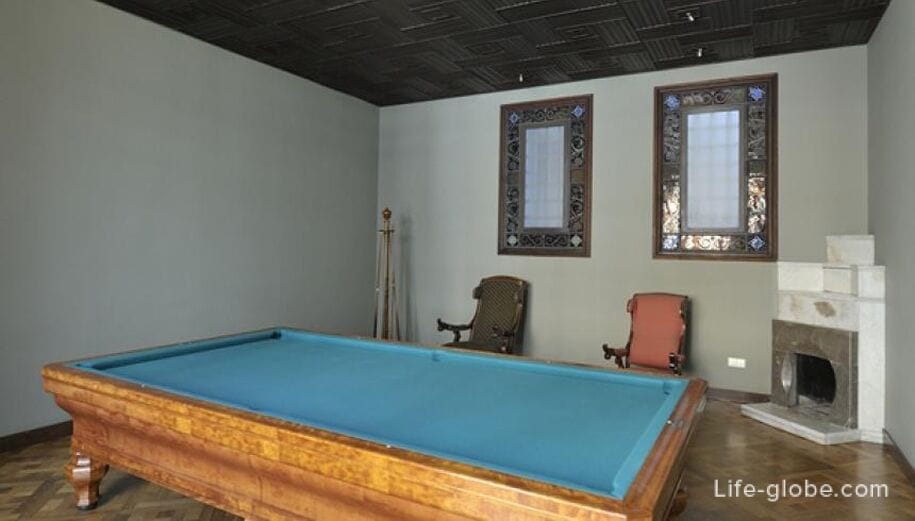
- the corridor that connects the palace with the family house on the Rambla Street, where Eusebi Guel's father lived until his death.
This is a glazed corridor with cathedral-type glass embedded in an alveolar iron structure. The set was designed by Gaudi.
In this space, the children of Eusebi Guel exhibited their collected works of art and antiques;
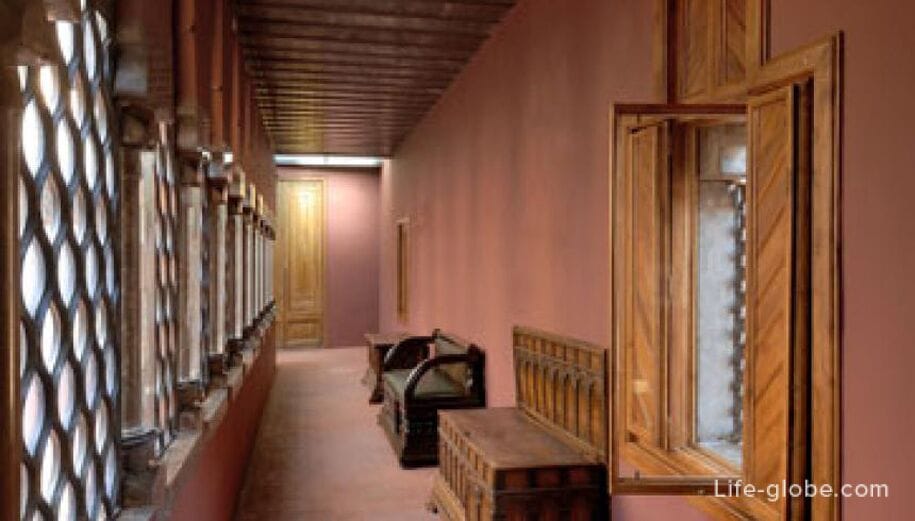
- the terrace, which was a private space and which can be accessed, among other things, from the dining room and from the billiard room.
From the terrace you can see the rear facade of the palace.
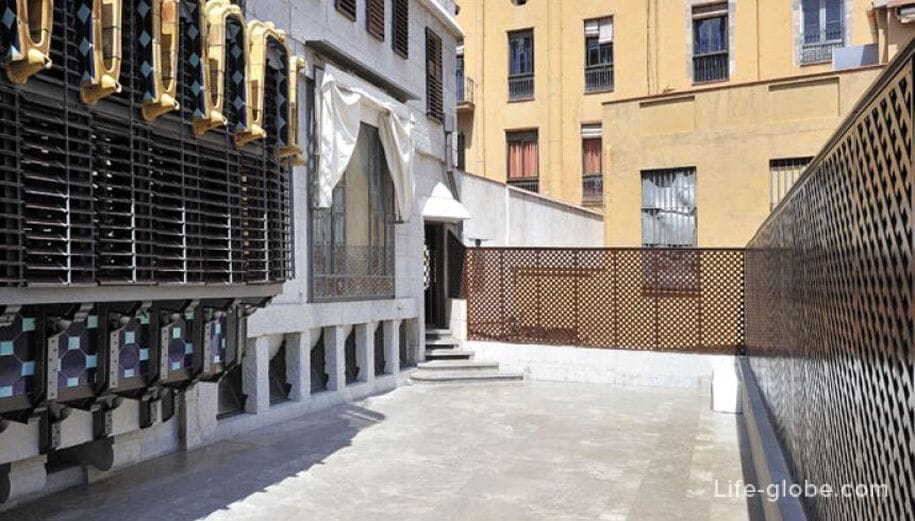
Musicians' Tribune
Above the central hall there is a mezzanine located between the main floor and the floor of the bedrooms of the palace.
There is a rostrum of musicians, where the orchestra was located on the days of performances.
The grandstand stands out with a lattice and wooden railings inlaid with ivory.
From the musicians' rostrum there is access to a secure room - a small space with access to the gallery used by the service staff to monitor visits to the central floor.

Floor of bedrooms
The second floor of the palace was private and contained the family's private living room, bedrooms, children's rooms and a bathroom.
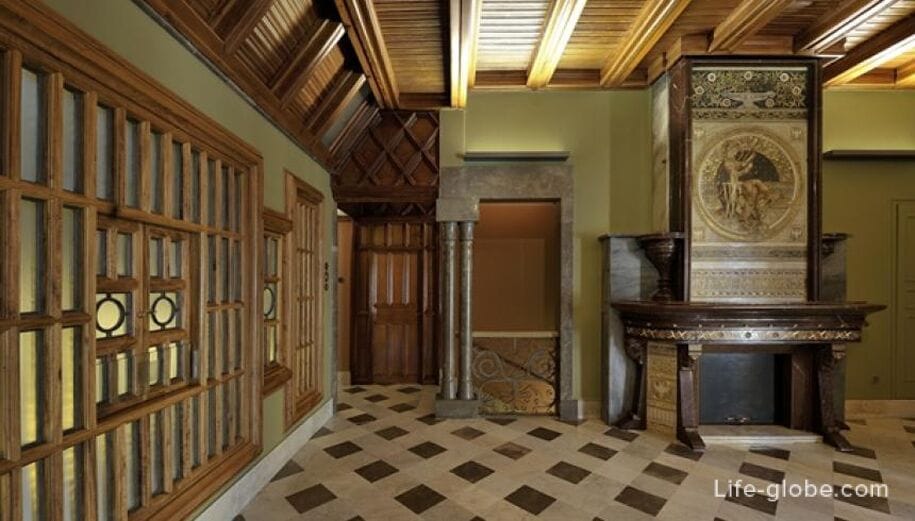
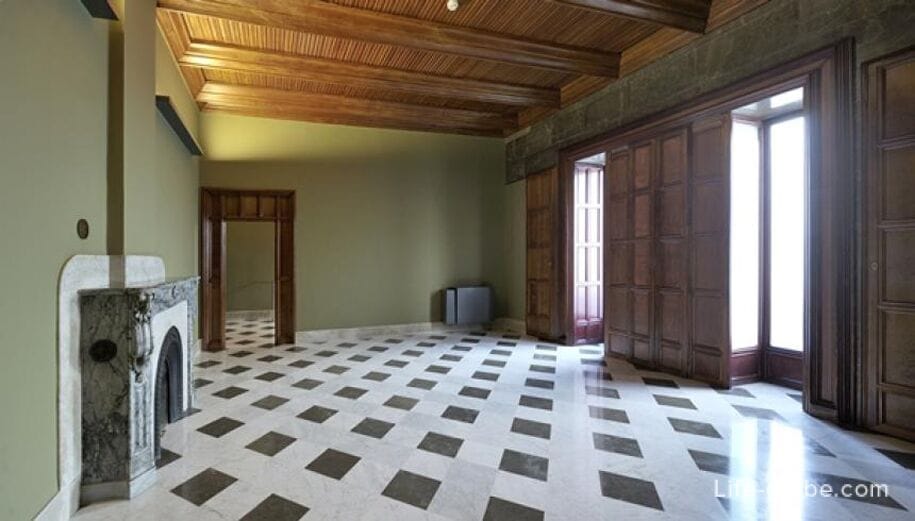

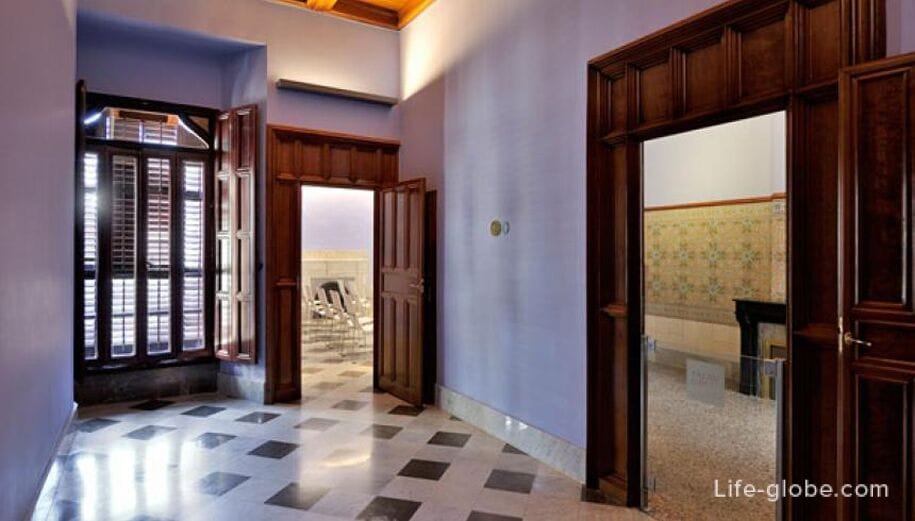
Attic
On the attic floor there were utility rooms.
Currently, this is a single space, but before it was divided into sections and had eleven bedrooms for staff, a laundry room and a kitchen.
The attic is distinguished by alternating vaults on the ceiling and parabolic arched windows of the inner walls facing the central hall. These windows have stained glass windows designed by Gaudi.
Currently, this space is used for temporary exhibitions.
A staircase leads from the attic to the roof of the palace.
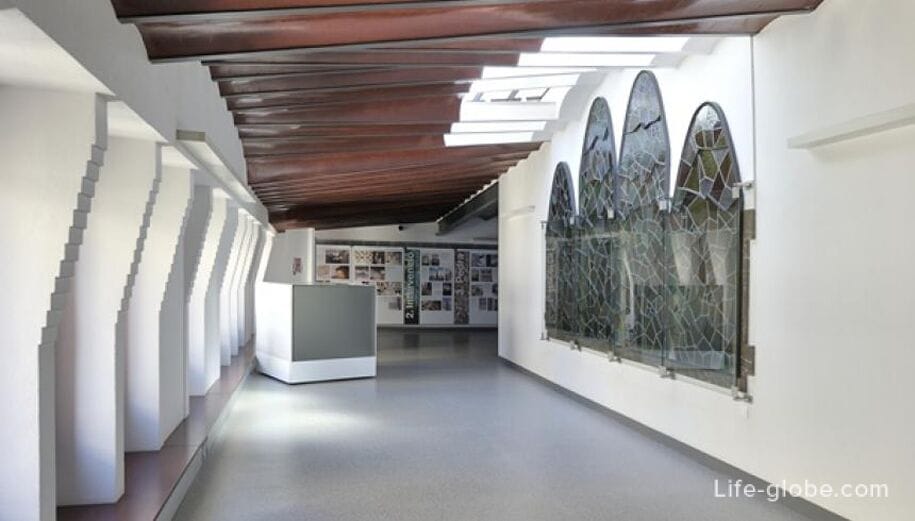

Roof
The roof is the most attractive place of the Guell Palace.
The roof is distinguished by twenty chimneys and a central needle 15 meters high.
On the roof, Gaudi turned traditional chimneys into real sculptures that resemble the architecture of Barcelona's Parc Güell.


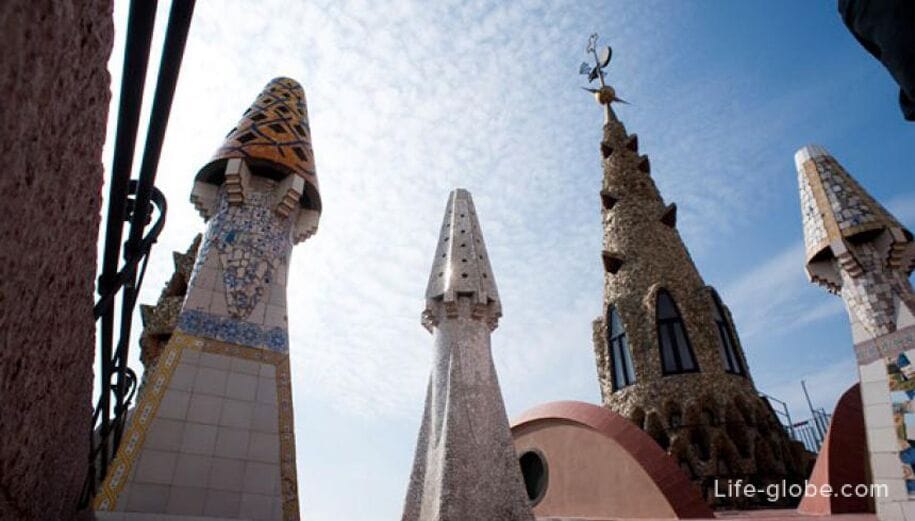
The Guell Palace is located in the old city of Barcelona in the El Raval subdistrict, at the address: Carrer Nou de la Rambla, 3-5.
Coordinates of the Guell Palace: 41°22'44.0"N 2°10'26.0"E (41.378889, 2.173889).
The visit to the palace is paid.
The opening hours of the palace, the time of temporary exhibitions, the cost of tickets, places and conditions for their purchase, recommends checking on the official website of the Palace of Guell: palauguell.
All accommodation facilities in Barcelona, including in the city center, near beaches and more remotely from those, can be viewed and booked here